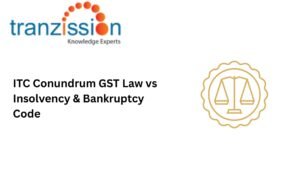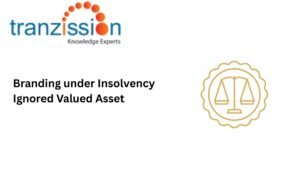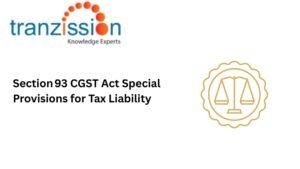
Employees under Insolvency and Bankruptcy Code, 2016 Regime

Table of Contents
The Insolvency and Bankruptcy Code, 2016 (“the IBC”) aims to consolidate and streamline the insolvency resolution process, focusing on time-bound procedures for maximizing asset value and promoting entrepreneurship. A key issue when a company enters insolvency is the fate of its employees, who may face job loss and unpaid dues. Hence, Employees under Insolvency protection is crucial , as it ensures fairness, social stability, and can even contribute to the success of resolution plans.
Legal Standing of Employees under IBC
Employees are recognised as operational creditors with the right to claim unpaid salaries and dues, referring to the definition under section 5(20) of the IBC. Section 5(21) defines “operational debt” to include claims arising from employment, such as unpaid salaries and other dues. This means employees, including workmen, are considered operational creditors when seeking recovery of such dues. Hence, employees can file claims for their unpaid salaries and other dues with the resolution professional (RP) during the corporate insolvency resolution process (CIRP). While they cannot be part of the Committee of Creditors (CoC), they do not have direct voting rights unless their collective dues constitute a significant portion of the total debt. The IBC also gives special attention to workmen dues, ensuring that such dues are prioritized within the liquidation process under section 53 of the IBC. .read more Section 34 of Arbitration Act
Treatment of Employee Dues in Insolvency Resolution Process
- Filing of Claims by Employees: Regulation 9 of the Insolvency and Bankruptcy Board of India (Insolvency Resolution Process for Corporate Persons) Regulations, 2016 (“the CIRP Regulations”) explains the procedure for filing claims by workmen and employees during CIRP. It mandates that these individuals must submit their claims with proof to the interim resolution professional (IRP) or RP in Form D, which can be done in person, by post, or electronically.
- Priority of Claims in Resolution Plan: The RP must maintain a list of creditors, verifying claims based on submitted proof and ensuring they align with the IBC and CIRP Regulations. Therefore, their role is administrative, ensuring a smooth and transparent process, rather than making final decisions on the validity or priority of claims.
- Moratorium under Section 14: The IBC provides a moratorium period during the CIRP, during which creditors cannot initiate legal proceedings to recover debts. However, as per section 36(4)(a)(iii) explicitly excludes all sums due to any workman or employee from the provident fund, the pension fund, and the gratuity fund from the liquidation estate, meaning these funds are not part of the assets to be distributed as part of the liquidation estate.
Employees in Liquidation Process
- Distribution Waterfall under Section 53: Under the distribution waterfall of section 53, employees dues are prioritized with workmen dues taking precedence over other employee dues and secured creditors. The distinction between secured and unsecured creditors lies in the security they hold over the companies assets, and secured creditors have a claim on specific assets, while unsecured creditors do not. Further, workmen and other Employees under Insolvency are based on the nature of their work and the duration of their employment preceding liquidation.
- Time Limits on Dues: According to section 53(1)(b), workmen’s dues for the period of twenty-four months preceding the liquidation commencement date are prioritized, ranking equally with secured creditors who relinquish their security. Following this, employee wages and dues for the preceding 12 months have a lower priority.
- Treatment of Provident Fund, Pension, and Gratuity: Under Section 36(4)(a)(iii) of the IBC, amounts due to workmen or Employees under Insolvency from provident funds, pension funds, and gratuity funds are specifically excluded from the liquidation estate of a corporate debtor, hence such funds are not part of the assets available for distribution to creditors during liquidation.
Judicial Interpretations and Key Case Laws
The Jet Airways case emphasises the supremacy of statutory provisions over private settlements, ensuring workmen permanency and related benefits are protected. The Supreme Court reaffirmed the principle that beneficial legislation like the Standing Orders Act cannot be circumvented by private agreements that curtail employee rights. The courts intervention was crucial in ensuring that workmen’s rights, workmen permanency and associated benefits were upheld, despite prior settlement where they seemingly waived these rights.
Employee Rights vs. Revival Strategy
During CIRP, a delicate balance must be struck between protecting employee rights and ensuring the viability of the resolution plan. While renegotiation of employment terms may be necessary, it should be done with transparency and in compliance with labour laws. Retaining critical talent is crucial for a successful revival, but the possibility of layoffs, delayed payments, or renegotiated terms can negatively impact employee morale and potentially hinder the process. Therefore, resolution plans should clearly outline the measures for employee protection including provisions for outstanding dues, severance pay, and continued benefits. While the primary goal of CIRP is the company, it is essential to prioritize employee well-being and ensure that their rights are protected throughout the process. The Alok Industries case demonstrates the tension between employee interests and the broader revival strategy, and emphasized the consistent approach in other cases to prioritize employee welfare.
Practical Challenges Faced by Employees During Insolvency
During the insolvency process, Employees under Insolvency face significant challenges due to job losses, unpaid wages and benefits, and uncertainty about their future:
- Lack of Awareness about Filing Claims
- Delayed Payments Despite Approval of Plans
- Anxiety Around Job Security and Lack of Representation
Suggestions to Strengthen Employee Protection
To strengthen Employees under Insolvency within the insolvency framework in India, it is suggested:
- To introduce mandatory representation of employee associations in the CoC, particularly for large companies.
- To adopt advanced technological methods to ensure speedier claim verification.
- To amend the IBC to include provisions for interim relief in genuine hardship cases.
- To maintain transparent communication with employees about the company’s financial situation can help manage expectations and reduce anxiety.
Conclusion : Employees under Insolvency
Employees under Insolvency are essential stakeholders in the IBC regime, often facing challenges in having their interests adequately represented during the resolution process. While the IBC aims to balance the interests of all stakeholders, the reality is that employees, particularly those in distressed companies, can be overlooked or marginalized.
FAQs
-
Can employees initiate insolvency proceedings under IBC?
Yes, employees can initiate insolvency proceedings as operational creditors under section 9 of the IBC.
-
What happens to employee benefits like PF and gratuity during liquidation?
During liquidation, employee benefits like Provident Fund (PF) and gratuity are generally protected and do not form part of the liquidation estate, according to Section 36(4)(a)(iii) of the IBC.
-
Do employees have any say in the resolution plan?
Being operational creditors, employees do not have a direct say in approving a resolution plan, but they do





